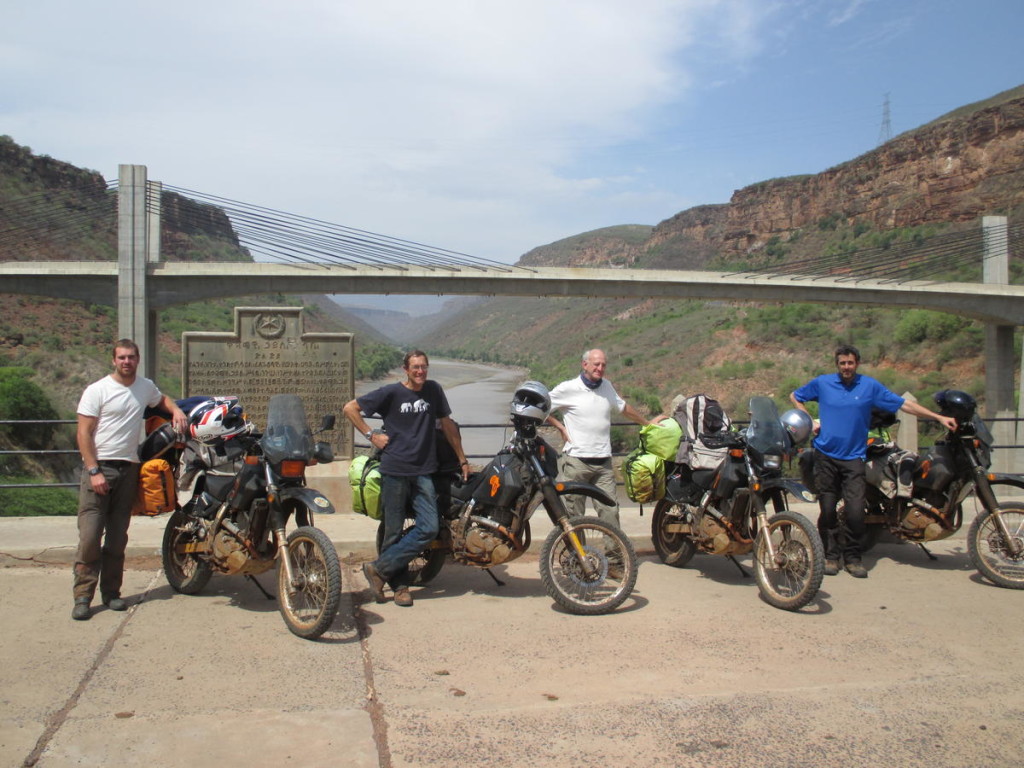296 km, 8012 km from Cape Town
BLUE NILE
A steep hilly climb out of Addis brought us into eucalyptus plantations interspersed by villages. Donkey carts were common along the way. Buses, taxis, cars and bikers give them full right of way. We always felt sorry for the donkeys, overburdened and clearly pushed beyond donkey limits by humans. Without vehicles, donkeys are the burden carriers of Ethiopia. Tough little critters and fully deserving of our biker respect. Our bikes are pretty loaded and we call them ‘mules’ so we could empathise fully with the donkeys. There were a lot of donkey foals which, though very endearing, were very skittish and easily prone to scaring by 650cc engines, causing them to spronk into the road without warning. I guess time and overburden makes donkeys wise and breaks their spirit as they plod, plod, plod to market or wherever. There were hadidas and vultures. Any sign of something dead brought the scavengers circling. No one has to remove animal carcases, the vultures clean up and the dogs get rid of the bones. A perfect solution to the problem. The vultures were huge and sat by their latest finds at the side of the road ignored by the humans.
A slight diversion from animals. Ethiopian villagers seem unknowingly energy efficient, using dried cow pats for fuel, which they stack in beehive-shaped heaps to dry, and eucalyptus for charcoal burning cookers. Totally self sustaining and renewable resources. We debated the eucalyptus planting and concluded it was a bad thing for the native flora, being an introduced alien invader. However, the Ethiopians seem to have embraced the problem by using the wood, bark and leaves. The wood is used for fires and charcoal, the fresh leafy twigs for fencing livestock. We were amazed at how multistorey buildings were constructed using eucalyptus pole scaffolding. So, although it appears to be here to stay, Ethiopians are at least finding a use for it and keeping it in check to some extent at the same time.
Ethiopians also seem to like their honey. Beehives consisted of long shaped reed baskets suspended in the trees by ropes. Bees attacked the sugary cinnamon on the rims of our tea cups at one welcome village stop. They look different to SA bees. Slightly smaller abdomen and paler in colour. We wondered if they sting as badly but didn’t test this out. We also heard that the monks make meade or honey wine and this may have been what locals were selling in bottles on the side of the road but we did not stop to check. The cattle are fed from huge drying haystacks of either corn or wheat stalks left over from the harvest. The stacks are munched all around the middle at cow head height, leaving them looking like giant mushrooms.
At a breathtaking stop on the incredible Blue Nile gorge, enterprising young hustlers brought out handfuls of fossil shells to bargain. Mostly consisting of clam and small spiral shell fossils, they bore evidence of sea life that must have existed prehistorically in the silt and mud layers of the area long before the Blue Nile carved its way down through the layers.
From the bridge spanning the gorge, we heard and saw baboons, barking and coughing at us from the rocks. We crawled our way down the rocky path to the bottom disturbing their otherwise idyllic baboon games and business.Two cream and brown marked geese viewed our Nile mudlarking nervously, leaving their tracks across the virgin mud and slime. We debated whether there were any crocodiles but decided there didn’t appear to be based on the lack of traces in the mud and sand.
– Sierra
